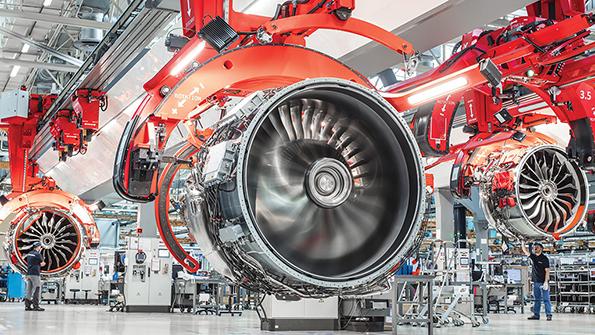Safran Concerned About Major Increase In Energy Prices

CFM is ramping up production of its Leap engines to meet Airbus A320neo demand.
Skyrocketing prices for gas and electric power in Europe are beginning to affect Safran’s supply chain as well as the company’s strategic decisions as the manufacturer struggles to orchestrate a steep production increase for its commercial aviation products.
“They are a serious and growing concern for us and the entire industry,” CEO Olivier Andries says. “When I look at the price of a megawatt hour in France, the U.S. and Asia, [the prices were] similar in 2019, and now [the price is] significantly higher in Europe, especially France. Despite our hedging policy on energy prices, we have seen them increasing by a factor of 2-2.5 between 2019 and 2022. We expect another doubling in 2023. Overall, this will be a fivefold increase in France and Europe between 2019 and 2023.”
The consequences may be painful. For example, Safran’s decision to create a fourth carbon brake factory has been postponed by 18-24 months. “We have to factor in that evolution for our future investments,” Andries says. “Energy costs account for 40% of the cost of a carbon brake.” Plans for the factory were announced in 2019. To be located in Feyzin, near Lyon, it would complement the existing one in nearby Villeurbanne.
- Safran postpones investment in new brake factory
- Leap engine deliveries are still challenging
Energy prices are much lower at the company’s other manufacturing sites in Walton, Kentucky, and Sendayan, Malaysia. As the Feyzin project has been put on the backburner, production capacities are being increased in Walton and Sendayan, Andries adds.
A €250 million ($247 million) investment, the Feyzin plant was to add 200-300 metric tons of annual production capacity to the current 1,500-1,700 metric tons by 2028, Safran Landing Systems CEO Cedric Goubet said in October.
A new process for carbon brake manufacturing, currently in the research and technology stage, is targeting a fourfold to fivefold improvement in energy efficiency. The process was to be introduced at the Feyzin plant first, before being retrofitted to other factories.
Meanwhile, Safran’s supply chain is being affected by energy prices, too. Many suppliers do not have hedging policies. “Some prefer to stop producing rather than lose money,” Andries says. “We welcome the French government’s plan to support small and medium-size enterprises [and help them curb their energy expenditures]. It is not just a matter of living through the next winter; it is about France and Europe’s competitiveness against other regions.
“And note: The plan does not address large companies,” Andries adds.
On the CFM Leap production side, Safran is still dealing with delays—even though Airbus CEO Guillaume Faury says the number of aircraft waiting for their engines to be delivered is no longer “meaningful.”
“We are late with Airbus and Boeing,” Andries says. The problems are concentrated in the U.S., where the aerospace supply chain had less support than in Europe during the COVID-19 crisis. Many left to pursue jobs in other sectors, and replacing them is difficult, Andries adds. CFM is a GE-Safran joint venture and therefore has a strong footprint in the U.S.
The level of delay has stabilized, but the catch-up phase will last until the end of 2023, Andries estimates. Fewer than 1,200 engines will be delivered in 2022. As for the target of 2,000 deliveries in 2023, “it is still our objective . . . but it will be a challenge,” he adds.
“We operate in a degraded environment,” Airbus’ Faury says, referring to the supply chain. “We have not been disrupted. . . . Final assembly lines did not stop. But many parts are arriving late, and a lot of outstanding work is complicating the production flow.
“The efficiency is low and predictability is low,” Faury concedes. “It will take until mid-2023 or longer to recover significantly. . . . The situation is bad, but . . . I hope we are at [the lowest] point.”
Leap production has accelerated recently, to 347 engines in the third quarter from 226 in the second quarter. “We made commitments with Airbus until 2024, and we are focusing on the 2022-23 ramp-up,” Andries says. Faury has reaffirmed plans to increase A320neo-family aircraft production to 75 per month by 2025.
For the recently certified Comac C919, Andries expects CFM will eventually deliver about 100 Leap 1Cs per year, when the program is mature on the production side.
Geopolitical tensions also are having an effect on Safran’s supply chain policy as the company moves toward a dual-sourcing strategy.
“On the Leap program, we had decided from the beginning to have two sources for each component and thus avoid single points of failure,” Andries says. “We are reinforcing that approach—we want to be multicountry, multisource and favor friendly countries—what we call friend-shoring.”






